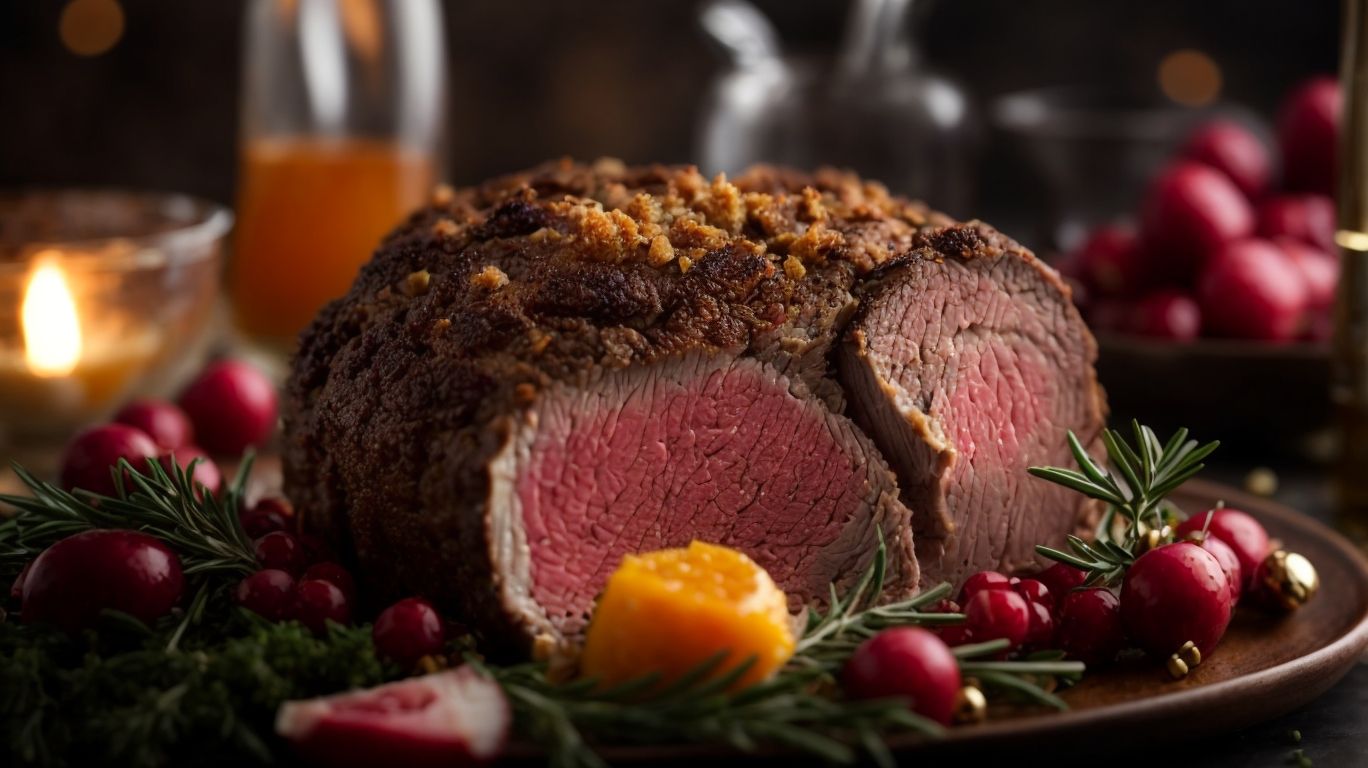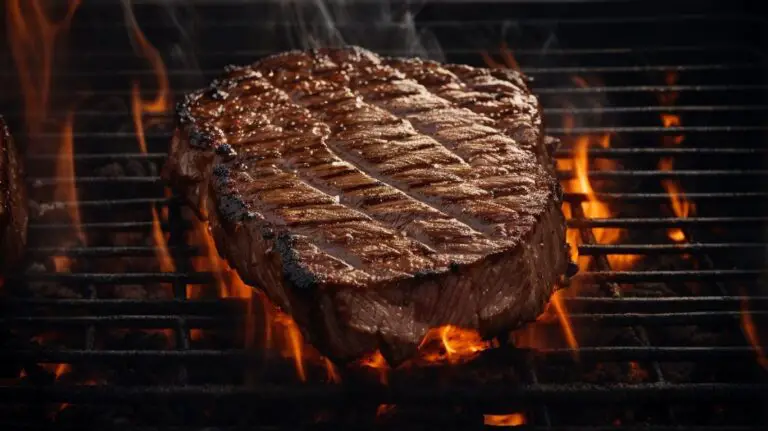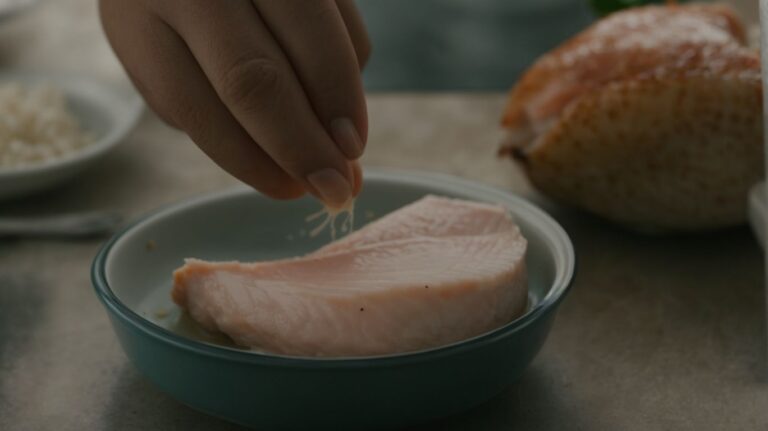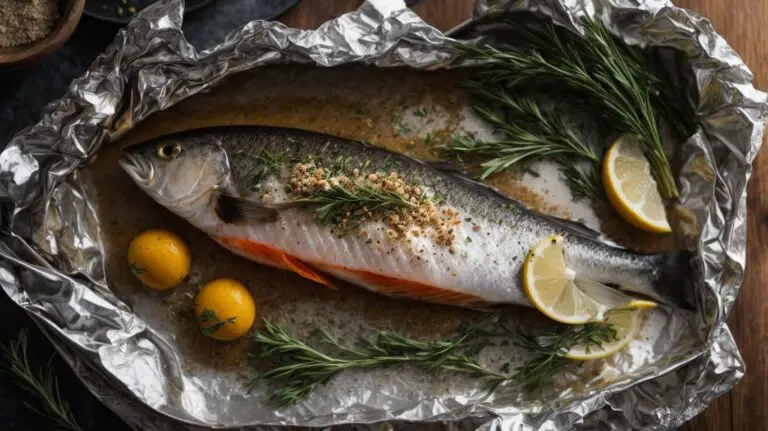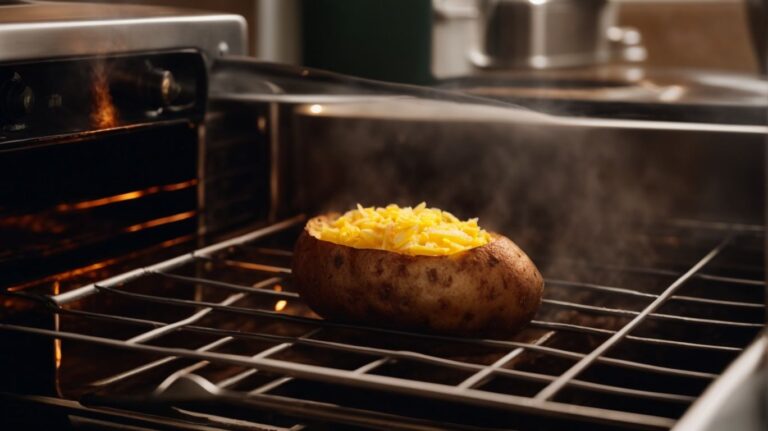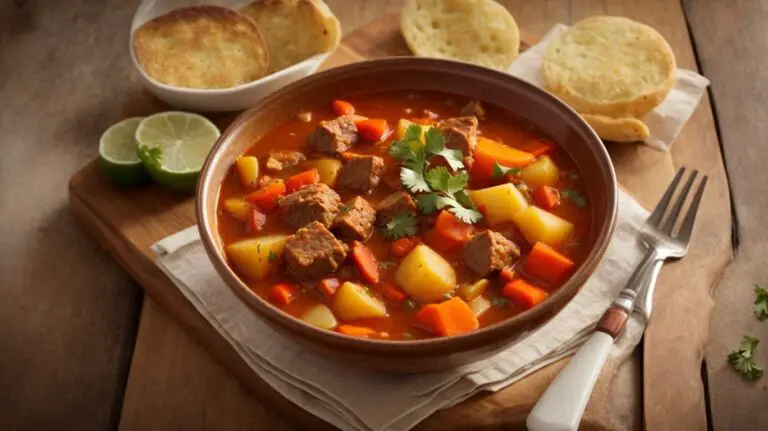How to Cook Prime Rib?
Are you looking to impress your guests with a delicious and succulent dish? Look no further than Prime Rib!
This article explores everything you need to know about cooking the perfect Prime Rib. From choosing the right cut to preparing and cooking methods, we’ve got you covered.
Whether you’re a seasoned chef or a beginner in the kitchen, these tips and tricks will help you serve up a mouthwatering Prime Rib that will have everyone coming back for more.
Key Takeaways:
What is Prime Rib?
Prime rib, also known as ribeye or rib loin, is a tender and flavorful cut of beef that comes from the rib section of the steer, known for its marbling and rich taste.
Regarding prime rib, its succulent qualities are attributed to the generous marbling of fat running through the meat, enhancing both tenderness and flavor. The ribeye, a boneless cut from the rib primal, offers a more concentrated taste and buttery texture.
On the other hand, the rib loin, often bone-in, contains the prized ribeye but also includes the complex flavors from the bones. This exquisite piece of meat is a favorite among meat enthusiasts for its juicy and melt-in-your-mouth tenderness.
What Makes Prime Rib a Popular Dish?
Prime rib is a popular dish, especially during the holiday season and for Christmas dinner, due to its succulent flavor, juiciness, and celebratory appeal for special occasions.
This quintessential centerpiece of many festive meals is known for its tender marbling and richness that delights the taste buds of all diners. The act of serving prime rib often signifies a special gathering or celebration, bringing family and friends together around a sumptuous meal. The aroma of slow-roasted beef permeating the air creates a sense of warmth and joy, enhancing the festive spirit of the holiday season. Its traditional significance during Christmas adds to the sentimental value attached to this extravagant dish.
Choosing the Right Cut of Prime Rib
Selecting the right cut of prime rib is crucial for the perfect roast, with options including bone-in and boneless varieties, graded as USDA Prime or USDA Choice for quality assurance.
What is the Difference Between Prime Rib and Ribeye?
The main difference between prime rib and ribeye lies in their preparation and serving styles, with prime rib being a roast while ribeye is typically grilled or pan-seared steak.
Regarding cooking methods, prime rib is often slow-roasted to achieve a tender, juicy texture throughout the roast. This method allows the flavors to fully develop within the meat, resulting in succulent slices that are perfect for special occasions or holiday meals.
On the other hand, ribeye is best cooked using high heat methods like grilling or pan-searing. This quick cooking technique creates a delicious caramelized crust on the outside while keeping the interior juicy and flavorful, making it a popular choice for steak lovers.
The textures of prime rib and ribeye also differ significantly. Prime rib tends to be more tender and moist due to its slow roasting process, with a melt-in-your-mouth consistency that is prized by many meat enthusiasts.
Conversely, ribeye offers a rich and intense beefy flavor with a firmer texture compared to prime rib. The marbling of fat within the ribeye cut enhances the taste and tenderness of the meat, providing a satisfying bite with each mouthful.
Regarding ideal serving techniques, prime rib is often carved into thick slices and served as a roast, either with or without bone-in for added flavor. It is commonly paired with hearty sides and au jus for a classic presentation that showcases the roasting process.
For ribeye steak, the ideal serving method is simple yet elegant. Sliced against the grain to ensure tenderness, ribeye is typically served on a plate with minimal accompaniments to let its bold flavors shine through. Pairing the ribeye with a compound butter or red wine reduction can elevate the dining experience to new heights.
What to Look for When Buying Prime Rib?
When purchasing prime rib, look for well-marbled cuts with a good balance of fat and lean meat, and consider seasoning options such as salt and garlic for enhancing flavor.
Opting for prime rib cuts with optimal marbling is crucial as it ensures a tender and flavorful eating experience. The marbling, the small streaks of fat interspersed throughout the meat, adds richness and succulence to each bite. A balanced distribution of fat and lean meat guarantees juiciness and tenderness when cooked to perfection.
Seasoning plays a pivotal role in elevating the taste profile of prime rib. Simple yet robust seasonings like salt and garlic complement the beef’s natural flavors without overpowering them. The judicious application of these seasonings enhances the meat’s savory notes and creates a delicious crust during cooking.
Preparing the Prime Rib
Preparing prime rib involves seasoning the meat with a flavorful herb rub, allowing the flavors to infuse and enhance the natural richness of the cut before cooking.
Should You Season the Prime Rib Before Cooking?
Seasoning prime rib before cooking is recommended to enhance its natural flavors, with common options like salt and garlic serving as popular choices for seasoning the meat.
Salting the prime rib ahead of time allows the seasoning to penetrate the meat, infusing it with flavor throughout. Garlic, whether minced or in powder form, adds a savory depth to the beef. Combining these seasonings with herbs like rosemary or thyme can further elevate the taste profile of the dish. For optimal flavor infusion, it’s advised to let the seasoned prime rib sit in the refrigerator for a few hours or even overnight before cooking to allow the flavors to meld together.
How to Trim Excess Fat from the Prime Rib?
Trimming excess fat from prime rib is essential to improve the texture and presentation of the roast, ensuring a balanced meat-to-fat ratio for a more enjoyable dining experience.
Achieving the perfect balance of fat is crucial when preparing prime rib to elevate its flavor and tenderness. Trimming excess fat helps prevent flare-ups during cooking, allowing the meat to cook more evenly. Fat contributes to the juiciness of the meat, but an excessive amount can overpower the natural flavors. To begin trimming, place the prime rib on a cutting board and use a sharp knife to carefully slice off any visible fat deposits. Gradually work around the roast, ensuring to leave a thin layer to enhance moisture and flavor.
Cooking Methods for Prime Rib
Cooking prime rib can be done using various methods such as oven roasting, grilling, or smoking, each offering unique flavor profiles and textures to the succulent meat.
Oven Roasting
Oven roasting is a popular method for cooking prime rib, allowing for even heat distribution and controlled temperatures to achieve a succulent and perfectly cooked rib roast.
When preparing to roast a prime rib, it’s crucial to start with a properly seasoned cut of meat. For optimal results, bring the rib roast to room temperature before placing it in the preheated oven.
Prime rib should be roasted at a high temperature, usually around 450°F (230°C), for the first 15-30 minutes to achieve a crispy outer crust. Then, reduce the heat to around 325°F (160°C) and continue roasting until the desired doneness is reached. A general rule of thumb is to cook the rib roast for about 15 minutes per pound. To ensure even cooking, remember to baste the meat periodically with its drippings or beef broth. Let the prime rib rest after roasting to allow the juices to redistribute, resulting in a tender and juicy cut of meat.
Grilling
Grilling prime rib yields a unique charred flavor and texture, ideal for those who prefer a rare doneness level, with cooking times typically ranging from a few minutes per side.
When grilling prime rib to a rare doneness level, it is crucial to achieve that perfect balance of sear on the outside while maintaining a juicy and tender interior. One effective method is to start by searing each side of the prime rib over direct heat to lock in the juices, creating those coveted grill marks. This initial searing should take around 3-4 minutes per side, depending on the thickness of the cut.
After searing, move the prime rib to a cooler part of the grill or lower the heat if using a gas grill, allowing it to continue cooking indirectly. This step helps to evenly cook the meat without burning the exterior. For a rare doneness level, you can aim for an additional 8-10 minutes of indirect grilling per side, adjusting slightly based on your desired level of pinkness in the center.
Smoking
Smoking prime rib introduces a distinct smoky flavor profile to the meat, with preparations involving smoking for several hours per pound and continuing until the desired level of doneness is reached.
When smoking prime rib, the gradual infusion of smoky flavor into the succulent meat is key to achieving that perfect balance of taste. The process typically involves using a smoker or grill, with wood chips or chunks like hickory, oak, or mesquite to provide the desired smokiness. The cooking duration is roughly 1.5 to 2 hours per pound of meat, but precise timing can vary based on the specific smoker setup.
Continuous monitoring is crucial during the smoking process, ensuring that the meat is tender and juicy and not overly smoked. To enhance the flavor further, some enthusiasts recommend adding a smoke pouch containing herbs or spices to infuse additional aromas into the meat.
Tips for Cooking the Perfect Prime Rib
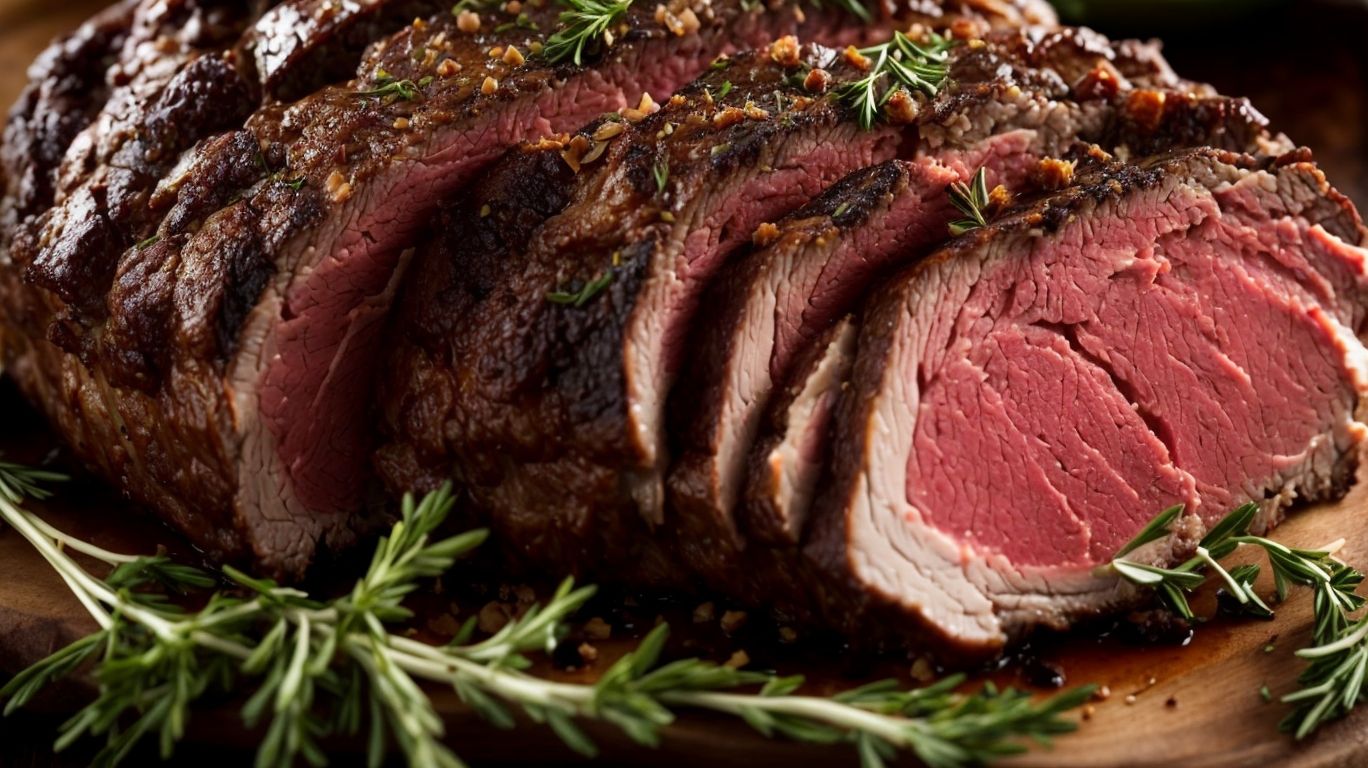
Credits: Poormet.Com – Jesse Thomas
Cooking the perfect prime rib requires attention to detail, including using a meat thermometer to monitor internal temperatures and allowing the meat to rest before serving for optimal juiciness.
Use a Meat Thermometer
Using a meat thermometer is crucial when cooking prime rib to ensure precise temperature readings and avoid under or overcooking the meat, resulting in a perfectly done roast.
When preparing a succulent prime rib, understanding the doneness levels is essential for achieving the desired taste and texture. A meat thermometer provides accurate feedback on the internal temperature of the meat, allowing you to monitor the cooking progress meticulously. Different thermometer types such as instant-read, probe, or leave-in thermometers can be utilized based on personal preference and cooking style.
To ensure food safety, it is recommended to cook prime rib to an internal temperature of at least 145°F (63°C) for medium-rare and 160°F (71°C) for medium. Insert the meat thermometer into the thickest part of the roast without touching the bone for the most precise reading.
Let the Prime Rib Rest Before Serving
Allowing the prime rib to rest after cooking is essential for the juices to redistribute within the meat, with recommended resting times typically ranging from 20 to 30 minutes per pound.
During this resting period, the meat continues to cook from residual heat, bringing it to the perfect doneness while allowing the juices to settle back across the entire cut. This process not only enhances the tenderness of the meat but also ensures a juicier final result, making each bite a flavorful experience. With the meat reabsorption occurring during resting, the flavors intensify, creating a more robust and succulent prime rib.
Don’t Overcook the Prime Rib
Avoiding overcooking prime rib is crucial to preserve its tenderness and juiciness, with rare to medium-rare doneness levels being preferred by most to fully enjoy the flavors of this premium cut.
Cooking prime rib to rare or medium-rare doneness allows the meat to retain its natural juices and tenderness, resulting in a succulent and flavorful experience.
Overcooking can lead to a dry and tough texture, diminishing the overall dining satisfaction. It is essential to monitor cooking times carefully to achieve the desired doneness without compromising the quality of the prime rib.
Serving Suggestions for Prime Rib
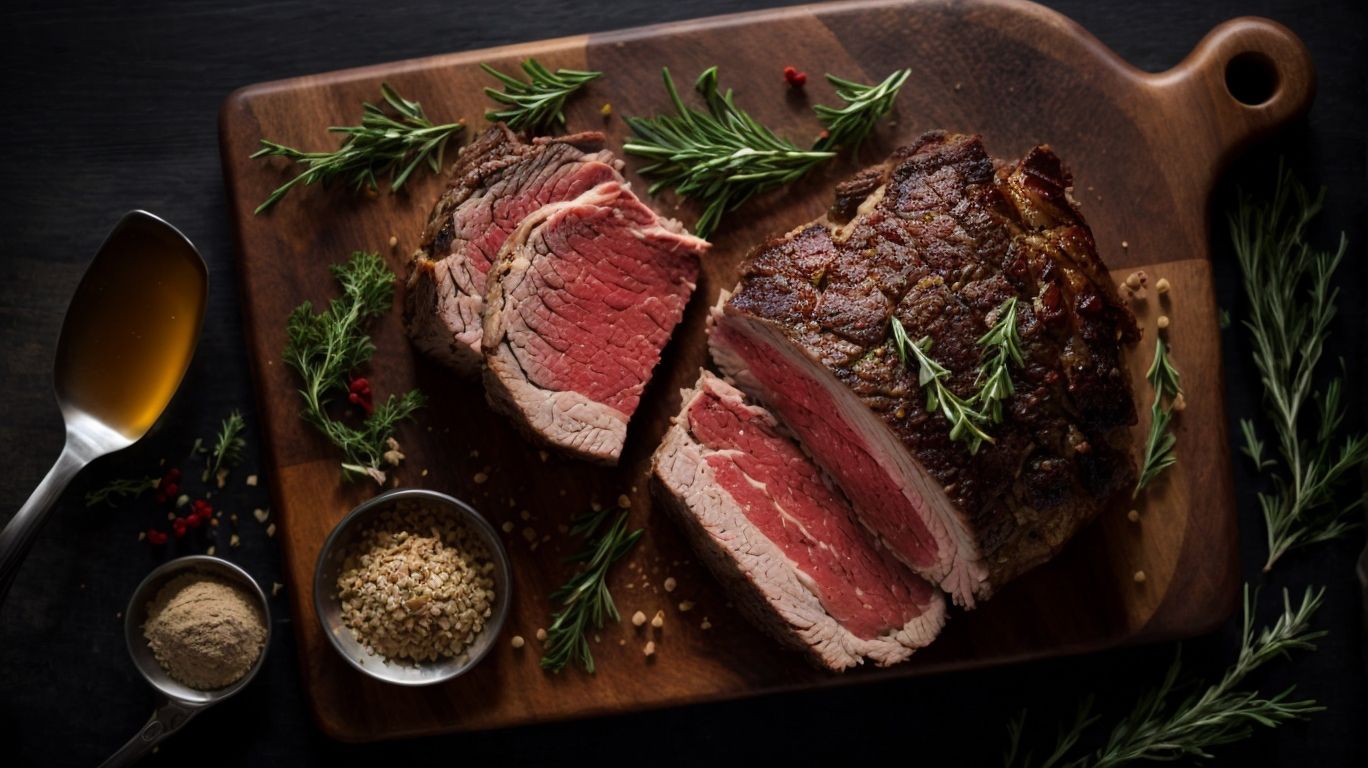
Credits: Poormet.Com – Roger Brown
Presenting prime rib can be enhanced with traditional accompaniments, creative side dishes, and expertly selected wine pairings to elevate the dining experience and complement the flavors of the roast.
Traditional Accompaniments
Traditional accompaniments for prime rib include classic seasoning options like salt and garlic, along with side dishes such as roasted vegetables, mashed potatoes, and flavorful gravy to complement the rich flavors of the meat.
Regarding seasoning a succulent prime rib, the choice of herbs and spices can greatly influence the overall taste. Salt is a crucial component that not only enhances the natural flavors of the meat but also helps form a delightful crust when seared. Incorporating garlic into the seasoning mix adds a savory depth that complements the beef beautifully.
Pairing prime rib with roasted vegetables is a classic choice that brings a balance of textures and flavors to the dish. The caramelized sweetness of the vegetables contrasts wonderfully with the savory richness of the meat. Mashed potatoes offer a comforting and creamy side that complements the hearty nature of prime rib.
A flavorful gravy can tie everything together, adding a luxurious touch to each bite. Whether you opt for a classic beef gravy infused with drippings and herbs or a rich wine reduction, the sauce adds another layer of complexity to the dish.
Creative Side Dishes
Get creative with side dishes for prime rib, ranging from refreshing salads and citrus-infused grains to unique sauces and dips, each designed to complement the succulent meat and enhance the dining experience.
For a contrast in textures, consider serving crispy roasted potatoes with a fluffy interior alongside your prime rib. These potatoes can be seasoned with fresh herbs and a sprinkle of sea salt for added flavor. Roasting them at a high temperature ensures a perfect golden crust.
Another option is to prepare a caramelized onion and mushroom medley, sautéed until they reach a rich golden brown color for a savory side dish complementing the richness of the prime rib. You can also opt for a tangy horseradish cream sauce to cut through the meat’s richness, providing a zesty kick to each bite.
Wine Pairings
Choosing the right wine to pair with prime rib involves considering the cooking method, temperature preferences, and flavor profiles of the meat to create harmonious combinations that elevate the dining experience.
For a succulent prime rib roasted to a perfect medium-rare, a bold and tannic red wine like Cabernet Sauvignon or Merlot is an ideal complement. The robust flavors of the meat stand up well to the rich, fruity notes of these wines, enhancing each other’s characteristics.
When serving prime rib that is grilled or pan-seared to achieve a caramelized crust, opting for a slightly chilled Pinot Noir can provide a refreshing contrast without overwhelming the dish.
Frequently Asked Questions
How to Cook Prime Rib?
First, preheat your oven to 450 degrees Fahrenheit and season the prime rib with salt and pepper. Then, place it on a roasting pan and cook for 15 minutes before lowering the temperature to 325 degrees. Use a meat thermometer to ensure it reaches the desired doneness.
What is the best method for cooking Prime Rib?
Slow roasting is the most popular method for cooking Prime Rib as it allows for even cooking and tender, juicy meat. Other methods include grilling, broiling, and smoking.
How long does it take to cook a Prime Rib?
The cooking time varies depending on the size of the prime rib and desired doneness. As a general rule, it takes about 15 minutes per pound for medium-rare, and 20 minutes per pound for medium.
Should I cover my Prime Rib while cooking?
It’s not necessary to cover the prime rib while cooking, but some chefs prefer to cover it with foil during the initial high-temperature cooking to prevent the crust from getting too dark.
How do I know when my Prime Rib is done?
To determine doneness, use a meat thermometer and insert it into the thickest part of the meat. For medium-rare, the internal temperature should be 135 degrees Fahrenheit, and for medium, it should be 145 degrees.
How do I keep my Prime Rib juicy?
To ensure your prime rib stays juicy, let it rest for 15-20 minutes after cooking before slicing. This allows the juices to redistribute throughout the meat. Also, make sure to place the meat on a cutting board with a juice groove to catch any excess juices.

